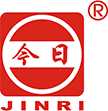How to Archive Paperwork with Lever Files?
Organizing paperwork efficiently is essential for maintaining order in both professional and personal environments. Lever files are one of the most reliable and practical tools for archiving large volumes of documents. They provide easy access, secure locking mechanisms, and long-term storage protection. This guide explains how to archive paperwork properly using lever files, including preparation, labeling, storage techniques, and maintenance. For durable and ergonomic lever file solutions, JINRI offers a wide range of products suitable for both office and academic use on their official website.
Understanding Lever Files
A lever file, also known as a Lever Arch File, is a hard-covered folder equipped with a metal lever mechanism that opens and closes to hold punched papers securely. The internal rings are strong enough to manage hundreds of pages, and the spine often includes a labeling space for easy identification. Lever files are commonly made from sturdy cardboard, plastic, or laminated board materials that protect documents from dust, moisture, and bending. Their design allows frequent access without damaging pages, making them ideal for archiving invoices, reports, contracts, and reference materials.
Step 1: Categorize Your Paperwork
Before inserting documents into lever files, sort all paperwork by category. Common grouping methods include:
By Department: Finance, HR, Sales, Procurement
By Year or Month: Ideal for long-term accounting or auditing records
By Client or Project: Useful for businesses that handle multiple accounts
By Document Type: Contracts, invoices, product catalogs, receipts
This classification minimizes future confusion and saves retrieval time. Using dividers or color-coded tabs enhances navigation within the file.
Step 2: Prepare and Punch Documents
Proper preparation ensures smooth filing and prevents paper damage. Remove all paper clips, staples, or rubber bands that can cause uneven stacking or rust marks. Use a two-hole puncher with standard spacing (usually 80 mm between holes). Align all documents neatly before punching to ensure uniformity. Damaged or torn pages should be repaired with transparent tape or inserted into protective sleeves before archiving.
| Preparation Step | Purpose | Recommended Tool |
|---|---|---|
| Remove fasteners | Prevent metal rust & paper damage | Staple remover |
| Align papers | Ensure even punching | Paper jogger or manual alignment |
| Punch holes | Standard filing format | Two-hole puncher |
| Repair tears | Extend document lifespan | Transparent repair tape |
Step 3: Insert and Secure with the Lever Mechanism
Open the lever file’s metal arch mechanism by lifting the lever upward. Place the punched papers through the rings in chronological or categorized order. Once all papers are inserted, push the lever down to lock the mechanism. The compression bar on top helps hold pages tightly in place, preventing them from slipping. For bulk documentation, avoid overfilling; the ideal capacity is around 450–600 sheets per file depending on the model. Overloading can bend the rings and reduce the file’s lifespan.
Step 4: Label Each Lever File Clearly
Labeling is crucial for quick identification during retrieval. Use printed spine labels or adhesive tags to display:
File title or category
Year or date range
Department or project name
File reference number
Maintain uniform formatting for all labels. Consistent font size and placement across files help maintain a professional, organized appearance on shelves. JINRI’s lever files often come with replaceable spine labels, allowing effortless updates when repurposing old files.
Step 5: Store in an Appropriate Environment
Proper storage extends the life of both the documents and the lever files. Keep the files:
Upright on shelves rather than stacked horizontally
Away from sunlight to prevent discoloration of covers
In a dry area with relative humidity below 60 %
At a moderate temperature to avoid paper warping
For large organizations, consider a dedicated archive cabinet or mobile shelving system with fire-resistant construction. Regularly inspect files for dust or mildew and wipe the covers with a dry cloth when necessary.
Step 6: Maintain and Update Regularly
An archive system must remain dynamic. Periodically review lever files to remove outdated materials or transfer inactive records to long-term storage. When a file becomes too full, split it into two volumes and label them sequentially (e.g., Finance Reports 2023 – Vol. 1 and Vol. 2). Consistent maintenance ensures the filing system remains efficient and scalable.
Advantages of Using Lever Files
Lever files offer several benefits over conventional folders or binders:
High Capacity: Accommodates hundreds of sheets without distortion.
Easy Operation: The lever mechanism allows one-handed opening and closing.
Durable Construction: Hard covers protect documents during long storage periods.
Professional Appearance: Uniform spine design presents a neat office display.
Reusability: Replaceable labels and strong rings make them sustainable and cost-effective.
These features make lever files an indispensable part of organized office management. Companies that handle frequent documentation—such as legal firms, educational institutions, or financial departments—can benefit significantly from a well-implemented lever file system.
Choosing Quality Lever Files from JINRI
For durable and user-friendly lever files, JINRI provides a comprehensive selection tailored to modern office requirements. Their products feature robust metal mechanisms, moisture-resistant covers, and ergonomic lever designs for fast operation. Available in multiple colors and sizes, they are ideal for both daily office filing and long-term archival purposes. Visit JINRI Stationery to explore their full range of lever files, document folders, and office organization solutions.
Conclusion
Archiving paperwork with lever files enhances efficiency, accessibility, and long-term protection of important records. By categorizing documents, ensuring proper punching, labeling clearly, and storing them in suitable conditions, you can maintain a tidy and functional archive system. Lever files represent not just a storage solution but a structured approach to documentation management. With high-quality options from JINRI, every business or organization can streamline its paperwork process and preserve essential records effectively for years to come.



